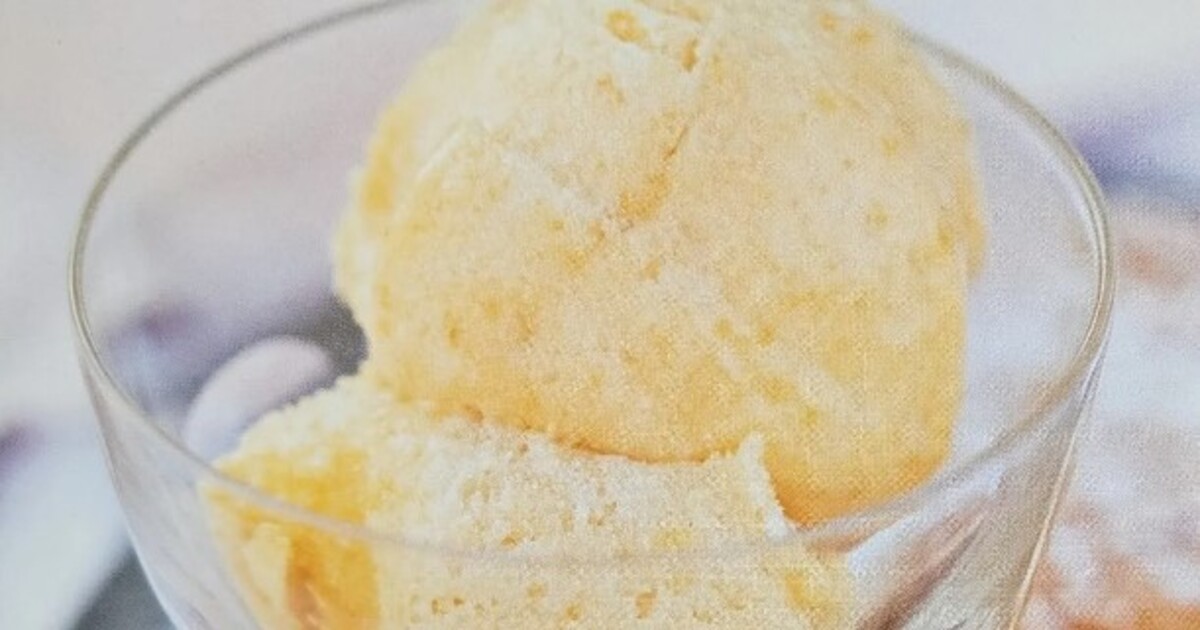Oh Lord, Just Give Me a … Sorbet
From sorbets to gelato and ice cream, the global history of frozen desserts — Plus: A recipe for Yellow Plum Sorbet.
August 17, 2024

I wish I owned an ice cream maker, though my scales are probably happy I don’t. I cannot pass a Gelateria, now almost as populous on London streets as coffee shops, without going in.
Just irresistible
I am not even that fond of the stuff. But it is so celebratory, and the flavors now offered so tempting to the curious tongue.
Who could resist a taste of dark chocolate sorbet — just to establish whether it could possibly be as rewarding as a cream-based chocolate ice cream? It is, and better.
Not all flavors are a success. I remember a rather unpleasant olive oil ice cream in Sicily followed the next day by a worse wine ice cream.
No, it is not an Italian invention
We tend to assume it is the Italians who first devised frozen desserts. After all, Marco Polo returned from China to Venice in 1295 with a sorbet-style recipe.
Marco Polo was extraordinary, not so much for his extensive travels around the Far East, which many of his contemporaries also pursued, as for the 13th-century travelogue written down by Rustichello da Pisa.
It is based on stories told to him by Marco Polo, the earliest version of which was titled “Le Devisement dou Monde.”
Marco Polo’s commercial intelligence
It gave the West — and, in particular, its trading fraternity — enormously detailed information on the vast area from Japan to Russia, the Middle East, the Mongol empire and the islands of what is now Indonesia.
As would be the case today, the travelogue covered the geography, flora, fauna, religions, art, culture and food of those countries.
The Persians had beaten the Italians
But it actually was the Persians who had beaten the Italians to the invention of ice desserts many centuries earlier. Around 500 BC, they started pouring grape juice concentrate over snow.
They devised an impressively complex recipe for their royal families involving iced rose water, vermicelli, saffron and fruits — not unlike the ice kachang of Southeast Asia today.
And the Chinese…
By 300 BC, the Chinese had discovered how to store blocks of ice underground to cool food and drink during the hot summers. A prototype Chinese ice cream — a milk and rice mixture frozen by packing it into snow — is recorded in 200 BC.
Later on, a 1st century AD Roman cookbook includes recipes for sweet puddings sprinkled with snow, while 2nd century Persian recipes exist for sweet drinks chilled with ice.
Et voila, iced tea
By the Tang dynasty in the 8th century AD, iced tea mixed with flakes of camphor and frozen in an ice box was being created for a member of the emperor’s family at the great palace at Changan.
Kakigōri, a Japanese shaved ice dessert popular today, dates back to the Heian period, from 794 to 1185. It is recorded in the 11th century “The Pillow Book of Sei Shonagon,” described as “chips of ice mixed with fruit juice and served in a new silver bowl.”
Ice made its way slowly west along the Silk Road, first arriving in the Middle East where shariba, a chilled Arab drink gave us the words “sherbet” and “sorbet,” then on to Renaissance Italy.
Who actually invented gelato?
But it was not until 1565 that Bernardo Buontalenti, a specialist in ice conservation, created an orange-and-bergamot flavored sorbet from ice, salt, lemon, wine, milk, sugar, egg and honey. I want one.
The invention of gelato alla crema is credited to him, although his contemporary Cosimo Ruggeri, the astrologer and more, is also up for that accolade.
Enter Windsor Castle and the Americans
The first ice house in Britain was built by Charles II in 1600, with the first ice cream eaten in England known to have been licked at Windsor Castle in 1667.
After that, everyone with enough wealth had to acquire an ice house. So on it went, until the Americans invented the refrigerator at the start of the 20th century.
Plus: The art of making a Yellow Plum Sorbet
If ice creams and sorbets and granitas were made so long ago without the need of modern equipment, the question arises how to make sorbets by hand, without a machine.
Based as they mostly are on an egg white foundation, sorbets fall into the same category as meringues and souffles — delights to be cooked by someone with a good deal more skill than you believe you have.
The method described below works with most soft fruits and berries, and especially well with raspberries and blackcurrants.
Here, it makes a Yellow Plum Sorbet so airy it was challenging to photograph it before it melted.
Ingredients
450g/1 lb yellow Mirabelle or other plums, halved, stoned
285g/1 ¼ cup sugar
150ml/5 fl oz water
1 tablespoon lemon juice
2 egg whites
Method
Stew the fruit with the sugar and water over medium until it has softened, 20-25 minutes. Cool then puree in a blender or processor.
Add the lemon juice. Pour into a container and freeze until the puree is firm but not rock solid, 3-4 hours, every so often digging down the frozen edges and spooning them into the middle.
Beat the egg whites in a large bowl with an electric whisk until stiff. Now, whisking at a medium-low speed, add the frozen fruit puree, one spoonful at a time, to the egg foam. Never let up on the beating, until it turns into a snow of fruit sorbet. Refreeze, lidded, until you want to serve it.
Takeaways
From sorbets to gelato and ice cream, the global history of frozen desserts — Plus: A recipe for Yellow Plum Sorbet.
We tend to assume it is the Italians who first devised frozen desserts. After all, Marco Polo returned from China to Venice in 1295 with a sorbet-style recipe.
The Persians beat the Italians to the invention of ice desserts many centuries earlier. Around 500 BC, they started pouring grape juice concentrate over snow.
A prototype Chinese ice cream — a milk and rice mixture frozen by packing it into snow — is recorded in 200 BC.
Kakigōri, a Japanese shaved ice dessert popular today, dates back to the Heian period, from 794 to 1185.

